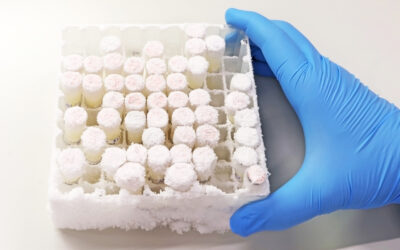Q: How frequently should I test targets for my molecular multiplex testing assays?
A: This is a common question for inspectors, vendors, and laboratorians. Unfortunately, there are no cut-and-dried answers, but there are some best practices that you can apply in your testing routine.
Consult the CAP Checklist
From the College of American Pathologists Microbiology checklist, question MIC.65200 states “For molecular-based quantitative and qualitative tests, controls are run at least daily, or more frequently if specified in manufacturer’s instructions, laboratory procedure, or the CAP Checklist, and when changes occur that may impact patient results.” The question goes on to note that the laboratory must define the number and type of quality control used and the frequency of testing in its quality control procedures.
The laboratory has two choices for testing targeted controls. First, you may follow the CAP daily quality control policy that says quantitative tests must have three controls run at least daily: a high positive, a low-positive, and a negative. For qualitative tests, only two controls, one positive and one negative, are required. Since that is a lot of work and a huge financial burden, most laboratories follow route two and write an Individualized Quality Control Plan (IQCP). An IQCP allows for the internal quality control process to be used instead of an external control material to meet the daily control requirements.
What should be in an IQCP?
Ultimately the laboratory director defines their own quality control procedures to monitor the extraction and amplification phases based on the lab’s risk assessment and the manufacturer’s instructions. CAP removed the requirement for quality control every 30 days in 2017 which means it is truly up to the lab to decide what they plan on practicing for quality control. While monthly testing is not required, it is a good idea to do this for low volume tests to ensure capture of positive targets. However, now with an approved IQCP, users may test each new shipment/new lot number instead of testing monthly.
With that being said, best practice would indicate that when positive control samples are tested, multiple targets are used for that testing. At a minimum, three positive targets should be used for multiplex assays. The more targets that are included in the assay, the more you should include in the quality control testing. Be careful not to include so many targets that some of them “fall out” or are not detected when tested. A good number to use is three to five targets for each positive control tested.
Test all targets at least annually
Rotation of targets is an essential element of testing to ensure that all targets are tested annually. Another best practice is to make sure each target is tested at least two to three times per year. Quality control should be performed more often if small batches of supplies are ordered and tests are run less frequently. The larger the amount of supplies purchased, the less frequently the targets will be tested.
Log your targets and rotate your pools
Keep a log of all the positive targets in your panels and match them up with your pooled controls. Rotate the pools with each new shipment. Ensure that positive pools have around three to five targets in them.
Don’t forget about revalidation
A final best practice is to include at least three to five positive targets whenever revalidating instrumentation, especially after repair.
Following these best practices will keep you compliant with CAP and other regulatory agencies. The only caveat to these practices is that if a vendor requires testing be done at specific frequencies, you must follow the manufacturer’s package insert and recommendations.
About the Author

Joslyn Pribble is an experienced auditor who has performed over 600 inspections for the College of American Pathologists (CAP). She serves as a member of the Laboratory Accreditation Program (LAP) for CAP in Microbiology and Immunology and is the current Texas State Director for the Southwestern Association of Clinical Microbiology (SWACM).
Pribble graduated from the University of Colorado with a double major in biology and English writing. She went on to earn a bachelor’s degree in medical technology and master’s degree in microbiology from the University of Colorado Health Sciences Center. She holds a Black Belt certification with an emphasis in healthcare from Villanova University and is certified as a Master Black Belt with the American Society for Quality (ASQ).
Read Next – Clinical Lab Best Practices: A Practical Guide to Acing Your Next Inspection






For clarification, when referencing MIC.65200 which part of the molecular testing is the Target Positive Control QC ran daily? The extraction stage through amplification stage or is the requirement exclusively referring to the amplification stage? When I see “assay performance” I interpret it as the amplification stage since my daily extraction control confirms the extraction performance.